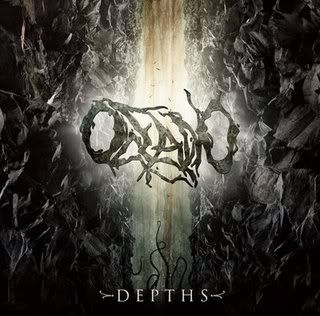
Oceano Prove That Deathcore Has Depths

Philosopher and academic Paul Hegarty began his 2007 tome Noise/Music: A History with the following description: “Noise is not an objective fact. It occurs in relation to perception–both direct (sensory) and according to presumptions made by an individual… Whether noise is happening or not will depend on the source of what is being called noise–who the producer is, when and where, and how it impinges on the perceiver of noise.” Such a definition is necessary in order to reasonably assess Chicago-based deathcore act Oceano.
While heavy metal has previously been appropriated–and, arguably, misappropriated–by artistic outsiders with agendas and ideologies, alongside nostalgic or even fetishistic sentiments, deathcore is a rare internal and naturally occurring movement that adopts the typically academic precepts of noise music inadvertently and almost entirely by chance. Indeed, as a subgenre, it is intolerable to most self-described heavy metal fans. It is safe to posit, given the lineup’s youth (at least one member is apparently still below the legal drinking age), that Oceano (and their deathcore ilk) are wholly unaware of and uninitiated in the legacy of noise that came before them, beginning with the Futurists and Dadaists of the early 20th century, continuing with the Fluxus artists of the 1960s and the avant-jazz musicians of the 1970s, and ultimately exploding worldwide in the latter fifth of the 1900s with performers like Merzbow and Lustmord paving the way for today’s stars like Christian Fennesz and Stephen O’Malley. It is a testament to Oceano that a manifestation of their talent for noise emerges even as they genuinely attempted to write an album’s worth of listenable heavy metal songs.
Frontman Adam Warren honors the vocal tradition of Yoko Ono (a participant in Fluxus even prior to her marriage and music with John Lennon) as much as he does Chuck Schuldiner. On “Slaughtered Like Swine,” Warren reproduces a stunning approximation of a porcine squeal. “Empathy For Leviathan” ostensibly mines the pelagic and oceanographic themes suggested by the band’s name and album title, though its lyrics are so inscrutably delivered that they could have very well been recorded underwater. Tracks like “With Legions” and “Samael The Destroyer” involuntarily lampoon heavy metal conventions with gratuitous noodling and tempo shifts, the latter of these permitting Jason Jones a three second bass solo. Oceano sound their best on “District Of Misery,” where the cacophony rarely lets up over its three minute duration. Here, bestial braying, irritatingly ticking drums, and insufferable low-end dominate, ending with the sound of an exploding septic system.
My sole, albeit minor criticism of the otherwise irreproachable Depths pertains to its six-and-a-half minute long title track. This melodiously repetitive, comparably exoteric diversion–perhaps an unconscious nod to the early looping experiments of Pierre Henry or Karlheinz Stockhausen– both well meaning though ill-advised and should be chalked up to the occasionally misguided ambitions of youth. I won’t posture as a seasoned deathcore aficionado, and I’d postulate that some of the more experienced fans of the subgenre may be disinclined to agree with my ebullient assessment of Oceano, perhaps favoring antecedants such as Suicide Silence and Whitechapel. Even still, Oceano’s Depths delivers on the promise of its title and offers an immersing aural experience for fans of La Monte Young and Job For A Cowboy alike.
In his aforementioned book, Professor Hegarty not only chronicled the role of noise in 20th and 21st century sound but also adumbrated a “future culture” based in some measure upon it. Going forward, I cannot possibly any credibly anthropological survey of such a culture without reference to Oceano, the undoubtedly reluctant new aesthetic leaders of noise.
-GS
[Gary Suarez is serious. He usually manages the consistently off-topic No Yoko No. Say, why don’t you follow him on Twitter?]


